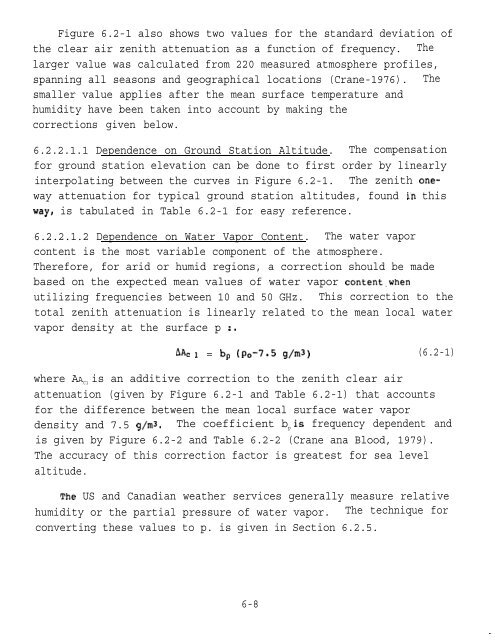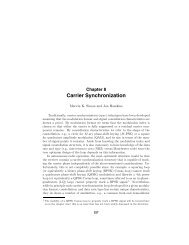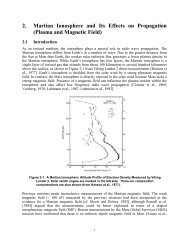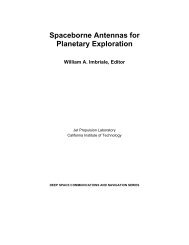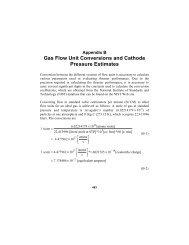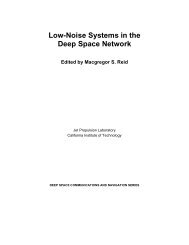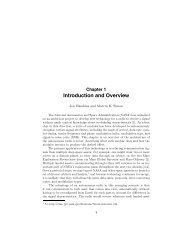Propagation Effects Handbook for Satellite Systems - DESCANSO ...
Propagation Effects Handbook for Satellite Systems - DESCANSO ...
Propagation Effects Handbook for Satellite Systems - DESCANSO ...
Create successful ePaper yourself
Turn your PDF publications into a flip-book with our unique Google optimized e-Paper software.
Figure 6.2-1 also shows two values <strong>for</strong> the standard deviation of<br />
the clear air zenith attenuation as a function of frequency. The<br />
larger value was calculated from 220 measured atmosphere profiles,<br />
spanning all seasons and geographical locations (Crane-1976). The<br />
smaller value applies after the mean surface temperature and<br />
humidity have been taken into account by making the<br />
corrections given below.<br />
6.2.2.1.1 Dependence on Ground Station Altitude. The compensation<br />
<strong>for</strong> ground station elevation can be done to first order by linearly<br />
interpolating between the curves in Figure 6.2-1. The zenith oneway<br />
attenuation <strong>for</strong> typical ground station altitudes, found in this<br />
way? is tabulated in Table 6.2-1 <strong>for</strong> easy reference.<br />
6.2.2.1.2 Dependence on Water Vapor Content. The water vapor<br />
content is the most variable component of the atmosphere.<br />
There<strong>for</strong>e, <strong>for</strong> arid or humid regions, a correction should be made<br />
based on the expected mean values of water vapor content.when<br />
utilizing frequencies between 10 and 50 GHz. This correction to the<br />
total zenith attenuation is linearly related to the mean local water<br />
vapor density at the surface p :.<br />
~Ac 1 = bP (PO-7.5 g/m3) (6.2-1)<br />
where AA C1 is an additive correction to the zenith clear air<br />
attenuation (given by Figure 6.2-1 and Table 6.2-1) that accounts<br />
<strong>for</strong> the difference between the mean local surface water vapor<br />
density and 7.5 g/m3. The coefficient b p is frequency dependent and<br />
is given by Figure 6.2-2 and Table 6.2-2 (Crane ana Blood, 1979).<br />
The accuracy of this correction factor is greatest <strong>for</strong> sea level<br />
altitude.<br />
“The US and Canadian weather services generally measure relative<br />
humidity or the partial pressure of water vapor. The technique <strong>for</strong><br />
converting these values to p. is given in Section 6.2.5.<br />
6-8<br />
-.


